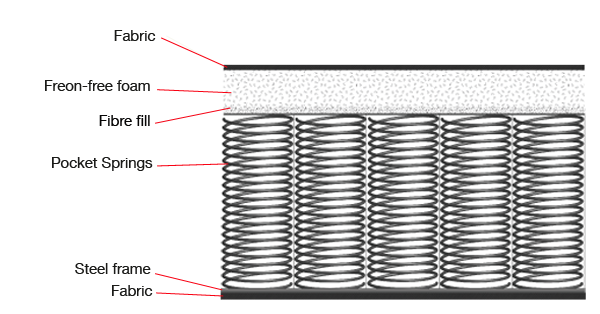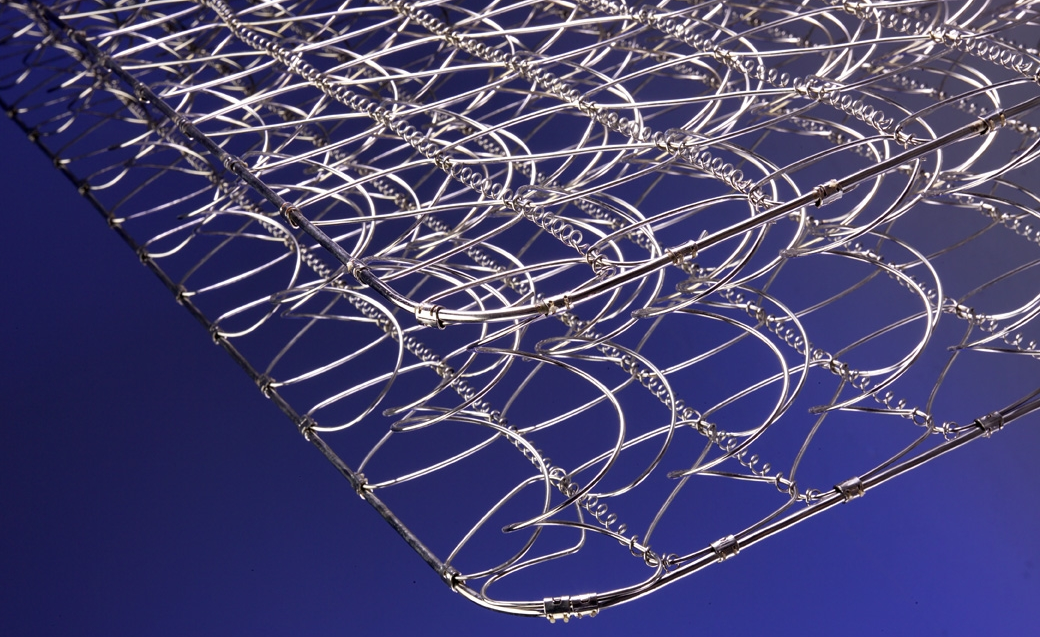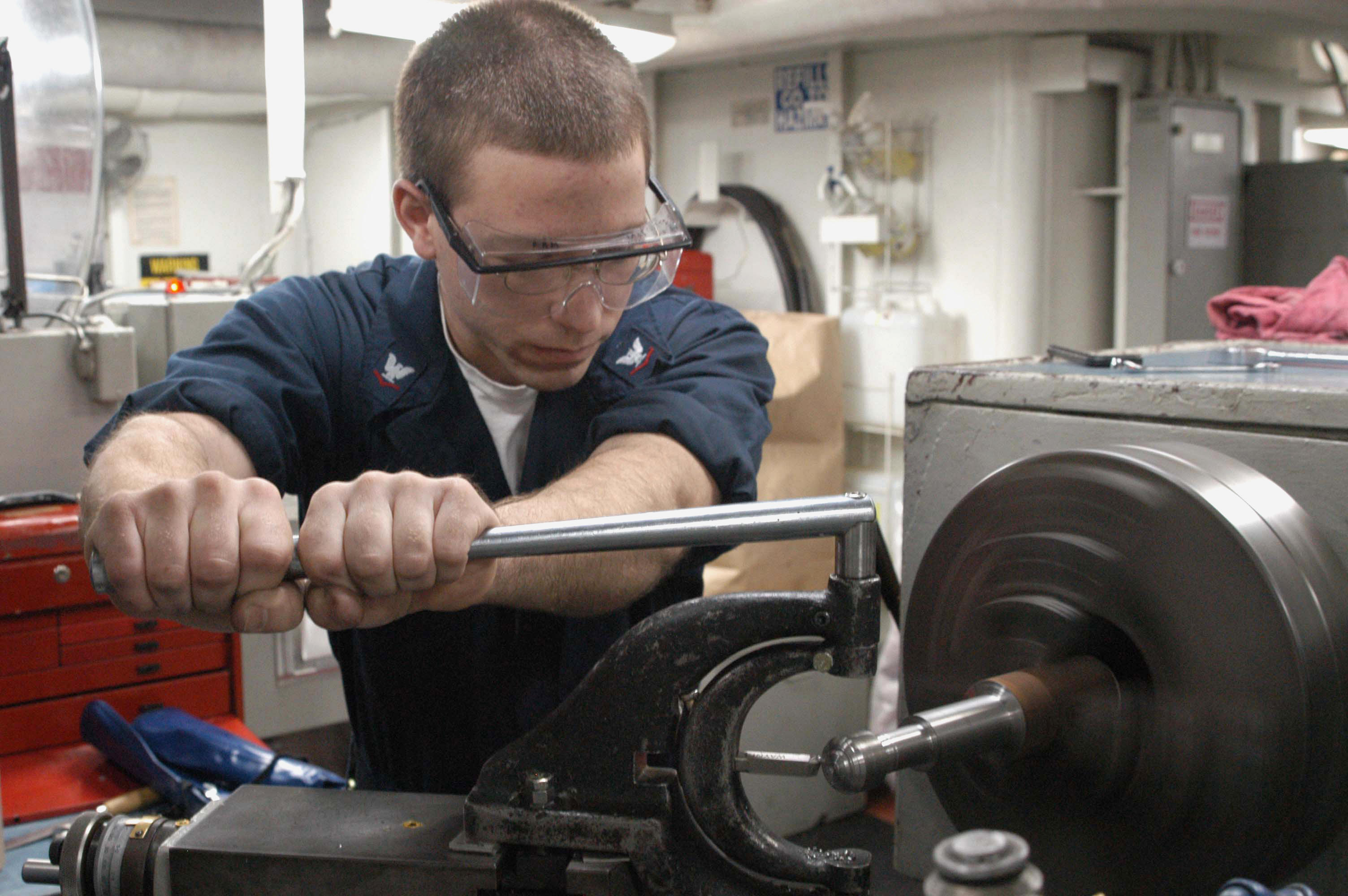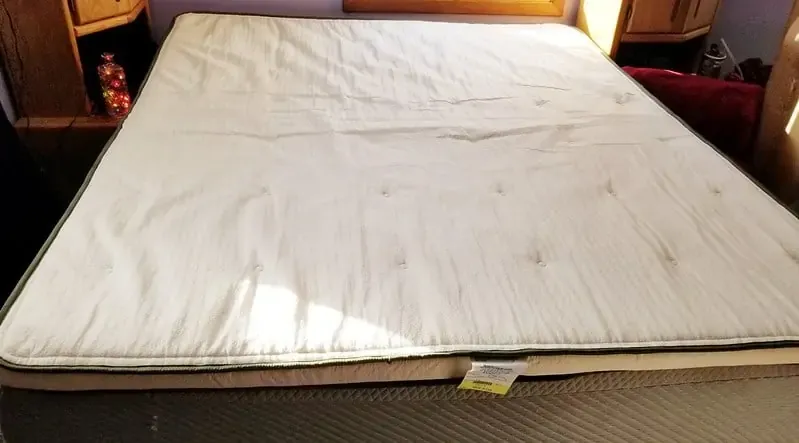|
Marshall Coil
Marshall coils, also known as encased coils or encased springs (most commonly known in North America as pocketed springs), are component parts of a mattress in which each coil is separately wrapped in a textile material. History Marshall coils were invented in 1899 by Canadian-born James Marshall, a machinist and engineer who was born near Haldimand, Ontario, Canada. He received a Canadian patent in 1900, and United States and United Kingdom patents in 1902. Marshall established the original Marshall Mattress company in Toronto, Canada, which continued to operate for over 119 years. He also licensed patent rights for the United Kingdom to his former employees; that company operated under the name of Marshall Sanitary Mattress Company until the early 1930s, when they changed their name to VI-Spring. In January 2019, the Flex Group acquired the (Canadian) Marshall Mattress Company from then-owners, the Warner family, to continue manufacturing handcrafted mattresses. Concept M ... [...More Info...] [...Related Items...] OR: [Wikipedia] [Google] [Baidu] |
Mattress
A mattress is a large, usually rectangular pad for supporting a lying person. It is designed to be used as a bed, or on a bed frame as part of a bed. Mattresses may consist of a quilted or similarly fastened case, usually of heavy cloth, containing materials such as hair, straw, cotton, foam rubber, or a framework of metal springs. Mattresses may also be filled with air or water. Mattresses are usually placed on top of a bed base which may be solid, as in the case of a platform bed, or elastic, such as an upholstered wood and wire box spring or a slatted foundation. Popular in Europe, a divan incorporates both mattress and foundation in a single upholstered, footed unit. Divans have at least one innerspring layer as well as cushioning materials. They may be supplied with a secondary mattress or a removable "topper". Mattresses may also be filled with air or water, or a variety of natural fibers, such as in futons. Kapok is a common mattress material in Southeast Asia, and coi ... [...More Info...] [...Related Items...] OR: [Wikipedia] [Google] [Baidu] |
Mattress Coil
Mattress coils, also known as mattress springs, are coil springs used in a mattress. Coils are primarily used in the core (support layer) of innerspring mattresses, which is their original use. In recent years, small "micro-coils" are being used in the upholstery (comfort layer) of mattresses, primarily with a coil core ("coil-on-coil" construction), but sometimes with other core types. Mattress coils were introduced in the mid-late 19th century, and remain popular in the 21st century, particularly in the United States. Types There are four types of mattress coils. A key desideratum is "response range", meaning the change in firmness as the spring is compressed – initially soft, to conform to the body, then hard, to provide support. In increasing order of response range and cost, the types are: * Continuous coils (the Leggett & Platt brand name is "Mira-coil") is an innerspring configuration in which the rows of coils are formed from a single piece of wire. They work in a h ... [...More Info...] [...Related Items...] OR: [Wikipedia] [Google] [Baidu] |
Machinist
A machinist is a tradesperson or trained professional who not only operates machine tools, but also has the knowledge of tooling and materials required to create set ups on machine tools such as milling machines, grinders, lathes, and drilling machines. A competent machinist should have a well-developed mechanical aptitude, the ability to correctly use precision measuring instruments, and a working knowledge of the proper speeds and feeds required for successfully utilizing the various work and tool materials commonly used in most machining operations. Nature of work Mass-produced parts of machines are more common today, but still require machinists and millwrights to calibrate and install machine parts to manufacture other parts. In many parts of the economy, however, custom-made parts are required for various uses. A machinist may work on manufacturing something simple like a motorcycle frame part, a piece of an internal combustion motor, or something extraordinarily complex, ... [...More Info...] [...Related Items...] OR: [Wikipedia] [Google] [Baidu] |
Engineer
Engineers, as practitioners of engineering, are professionals who invent, design, analyze, build and test machines, complex systems, structures, gadgets and materials to fulfill functional objectives and requirements while considering the limitations imposed by practicality, regulation, safety and cost. "Science is knowledge based on our observed facts and tested truths arranged in an orderly system that can be validated and communicated to other people. Engineering is the creative application of scientific principles used to plan, build, direct, guide, manage, or work on systems to maintain and improve our daily lives." The word ''engineer'' (Latin ) is derived from the Latin words ("to contrive, devise") and ("cleverness"). The foundational qualifications of an engineer typically include a four-year bachelor's degree in an engineering discipline, or in some jurisdictions, a master's degree in an engineering discipline plus four to six years of peer-reviewed professiona ... [...More Info...] [...Related Items...] OR: [Wikipedia] [Google] [Baidu] |
Canadian Patent Law
Canadian patent law is the legal system regulating the granting of patents for inventions within Canada, and the enforcement of these rights in Canada. A 'patent' is a government grant that gives the inventor—as well as their heirs, executors, and assignees—the exclusive right within Canada to make, use, and/or sell the claimed invention during the term of the patent, subject to adjudication. In general, Canadian patent law is administered by the Canadian Intellectual Property Office. The granting of Canadian patents is within the exclusive jurisdiction of the Canadian federal government and is governed by the federal ''Patent Act'', the ''Patent Rules'', and various international treaties and the regulations thereunder. The enforcement of Canadian patents is the responsibility of the Canadian Federal Court and the provincial/territorial Courts. Definition of a patentable invention Patents apply to inventions. To be considered patentable, an invention must pass three ... [...More Info...] [...Related Items...] OR: [Wikipedia] [Google] [Baidu] |
VI-Spring
Vispring, formerly known as Vi-Spring, is a bed company founded in 1901 in Eagle Street, Holborn, London. Manufacturing mattresses and beds made of natural materials. Part of Vispring's notability comes from being the first English bed makers to use the patent of Canadian-born engineer, James Marshall pocketed spring coil now commonly referred to as the Marshall coil. By 1914 Marshall Mattress' mattress collections were found in luxurious hotels, clubs and ocean liners, including The Queen Mary & The Titanic. Vispring was founded by two Marshall Mattress agents of James Marshall who granted them patent rights to produce Marshall mattresses in England. They continued to use the Marshall name until the early 1930s at which point they rebranded as Vispring. Careless, J.M.S. "Partners in Progress - Marshall Ventilated Mattress Co. Ltd." ONTARIO: A Celebration of Our Heritage. Missisauga: Canadian Heritage Gallery, Copyright © 1991, 1992 and 1993. 384-85. Print. Vi-Spring moved to ... [...More Info...] [...Related Items...] OR: [Wikipedia] [Google] [Baidu] |
Upholstery
Upholstery is the work of providing furniture, especially seats, with padding, springs, webbing, and fabric or leather covers. The word also refers to the materials used to upholster something. ''Upholstery'' comes from the Middle English word ''upholder'', which referred to an artisan who makes fabric furnishings. The term is equally applicable to domestic, automobile, airplane and boat furniture, and can be applied to mattresses, particularly the upper layers, though these often differ significantly in design. A person who works with upholstery is called an ''upholsterer''. An apprentice upholsterer is sometimes called an ''outsider'' or ''trimmer''. Traditional upholstery uses materials like coil springs (post-1850), animal hair (horse, hog and cow), coir, straw and hay, hessians, linen scrims, wadding, etc., and is done by hand, building each layer up. In contrast, today's upholsterers employ synthetic materials like dacron and vinyl, serpentine springs, and so on. Histor ... [...More Info...] [...Related Items...] OR: [Wikipedia] [Google] [Baidu] |
Mattresses
A mattress is a large, usually rectangular pad for supporting a lying person. It is designed to be used as a bed, or on a bed frame as part of a bed. Mattresses may consist of a quilted or similarly fastened case, usually of heavy cloth, containing materials such as hair, straw, cotton, foam rubber, or a framework of metal springs. Mattresses may also be filled with air or water. Mattresses are usually placed on top of a bed base which may be solid, as in the case of a platform bed, or elastic, such as an upholstered wood and wire box spring or a slatted foundation. Popular in Europe, a divan incorporates both mattress and foundation in a single upholstered, footed unit. Divans have at least one innerspring layer as well as cushioning materials. They may be supplied with a secondary mattress or a removable "topper". Mattresses may also be filled with air or water, or a variety of natural fibers, such as in futons. Kapok is a common mattress material in Southeast Asia, and coir ... [...More Info...] [...Related Items...] OR: [Wikipedia] [Google] [Baidu] |






